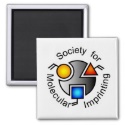|
|
Reference type: Journal
Authors: Özcan AA, Say R, Denizli A, Ersöz A
Article Title: L-Histidine Imprinted Synthetic Receptor for Biochromatography Applications.
Publication date: 2006
Journal: Analytical Chemistry
Volume: 78
Issue: (20)
Page numbers: 7253-7258.
DOI: 10.1021/ac060536o
Abstract: We have proposed novel surface-imprinted beads for selective separation of cytochrome c (cyt c) by N-methacryloyl-(L)-histidine-copper(II) [MAH-Cu(II)] as a new metal-chelating monomer via metal coordination interactions and histidine template. We have combined molecular imprinting with the ability of histidine to chelate metal ions to create ligand exchange beads suitable for the binding of cyt c (surface histidine exposed protein). The histidine imprinted beads were produced by suspension polymerization of MAH-Cu(II)-L-histidine and ethylene glycol dimethacrylate. After polymerization, the template (L-histidine) was removed from the beads using methanolic KOH, thus getting histidine imprinted metal-chelate beads. L-Histidine imprinted metal-chelate beads can be used several times without considerable loss of cyt c adsorption capacity. The association constant (Ka) for the specific interaction between the template imprinted polymer and the template (L-histidine) itself were determined by Scatchard plots using L-histidine imprinted beads and found as 58 300 M-1. Finally, we have used these histidine imprinted beads for cyt c and ribonuclease A (surface histidine exposed proteins) and enantiometric separation of D- and L-histidine by FPLC.
Template and target information: l-histidine, protein, cytochrome c, cyt c
|


 MI cryptic logo iphone3 speckcase
MI cryptic logo iphone3 speckcase







 SMI magnet white
SMI magnet white







 SMI logo hat
SMI logo hat






